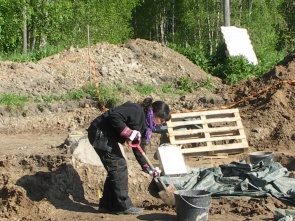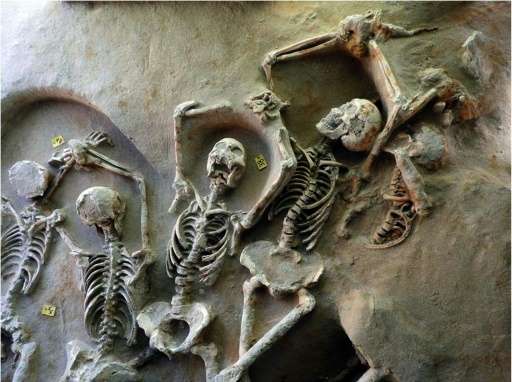Swedish archeologist in Greece
After most funding was pulled from the excavation of an Athens find, a Swedish archeologist is central to unraveling the age-old mystery of an Olypmpic champion in Greece.
-
 Anne Ingvarsson-Sundström in a photo from an earlier dig in Sweden, at the Sala Silver mine 2008. Photo courtesy Societas Archaeologica Upsaliensis/www.sau.se
Anne Ingvarsson-Sundström in a photo from an earlier dig in Sweden, at the Sala Silver mine 2008. Photo courtesy Societas Archaeologica Upsaliensis/www.sau.se -
-
An excavation in Athens started in 2012 with the construction of a new opera house and national library. In February 2016, when a mass grave was discovered, Sweden was consulted for participation in the excavations. Now Anne Ingvarsson-Sundström of Uppsala, is one of only two archeaologists on the project after most funding was pulled from the excavation, a victim of Greece’s economy crisis. Ingvarsson-Sundström examines skeleton after skeleton in a shallow mass grave at the site about six kilometers from the Acropolis, which was standing in 630 BC when the 80 men were buried there. She believes this may be evidence of the 2600-year-old Olympic history of Cylon, a young aristocrat who became an Olympic champion – but probably used his influence to stage a coup against elected leaders; the bodies are likely those of the young men he rallied together to create an army.
“I do not want to get ahead before I finish my report,” said Ingvarsson-Sundström. “But surely this is something very unusual, after a very tragic event.”
And what happened to Cylon himself? According to Thucydides, he managed to escape, but that may soon — finally — be known for sure. -
 A Swedish archaeologist is working on a site in Athens, Greece where skeletons traced to the year 630 BC were found. Several factors, including the fact that their arms are raised above their heads, may link them to Cylons conspiracy, a famous rebellion. Photo source archaeology.org
A Swedish archaeologist is working on a site in Athens, Greece where skeletons traced to the year 630 BC were found. Several factors, including the fact that their arms are raised above their heads, may link them to Cylons conspiracy, a famous rebellion. Photo source archaeology.org -
-
-
